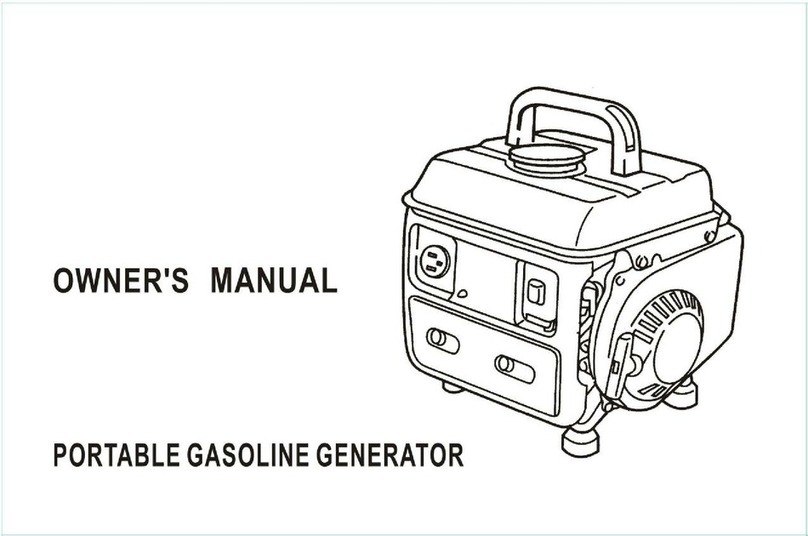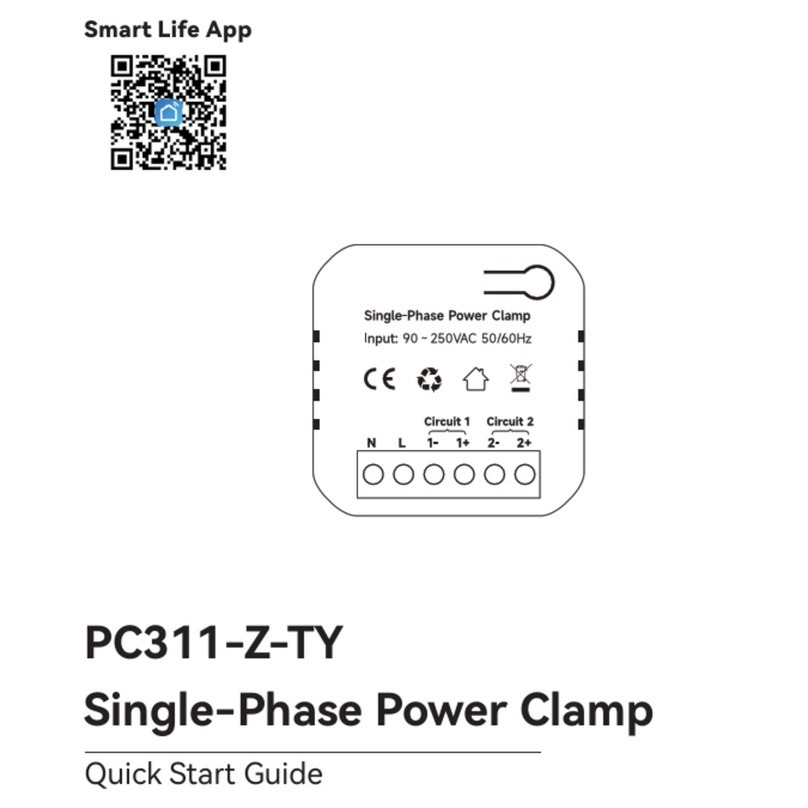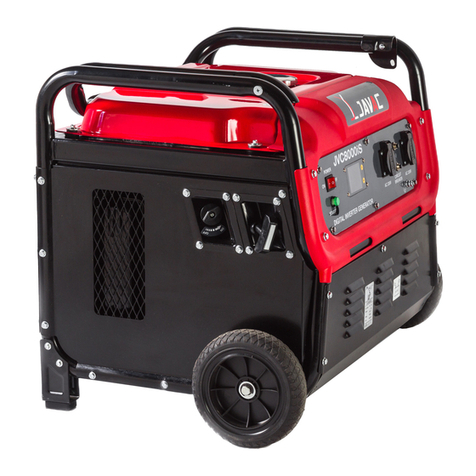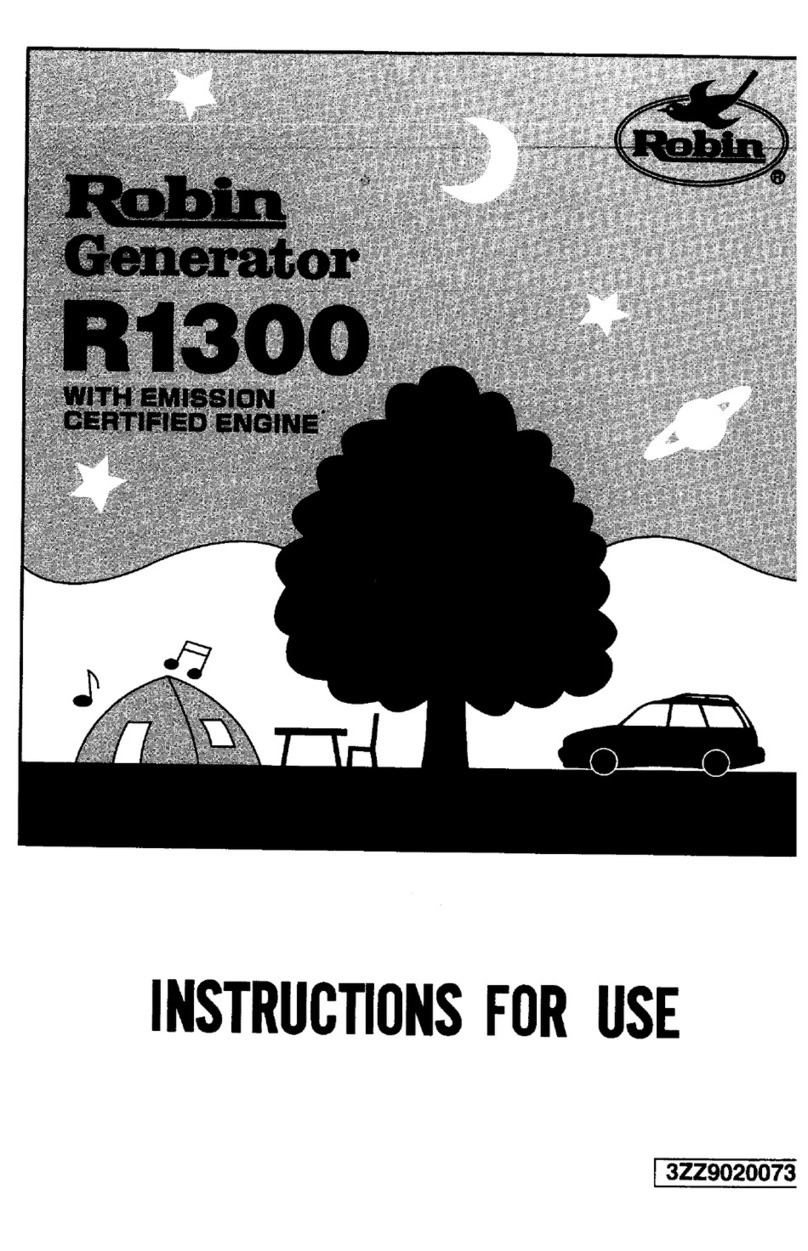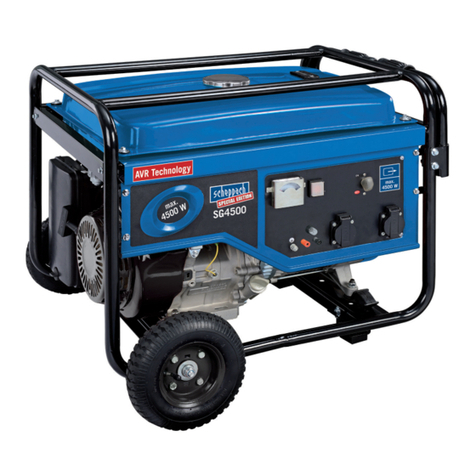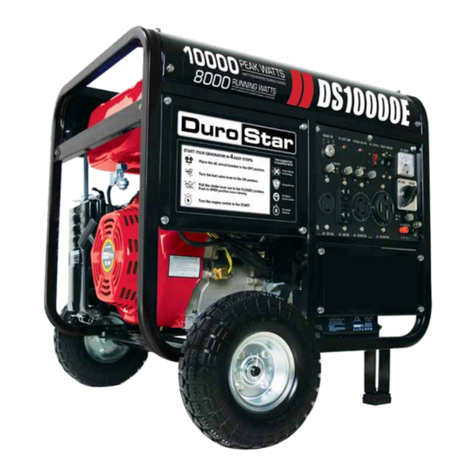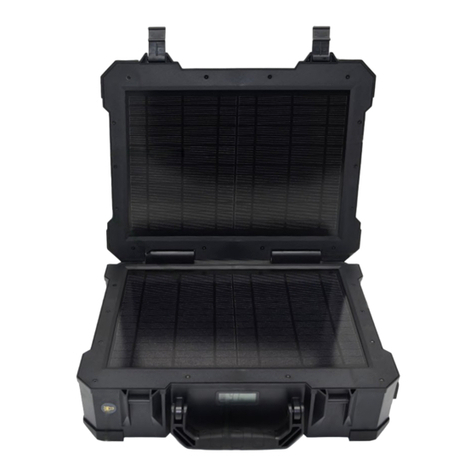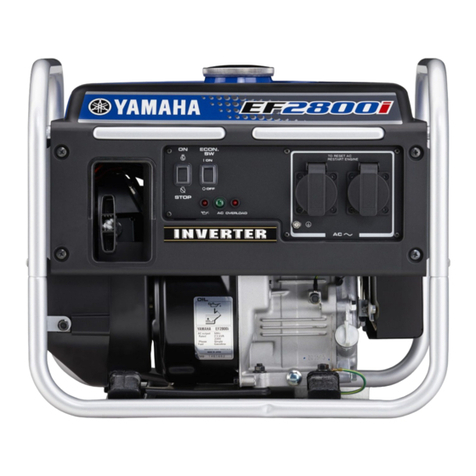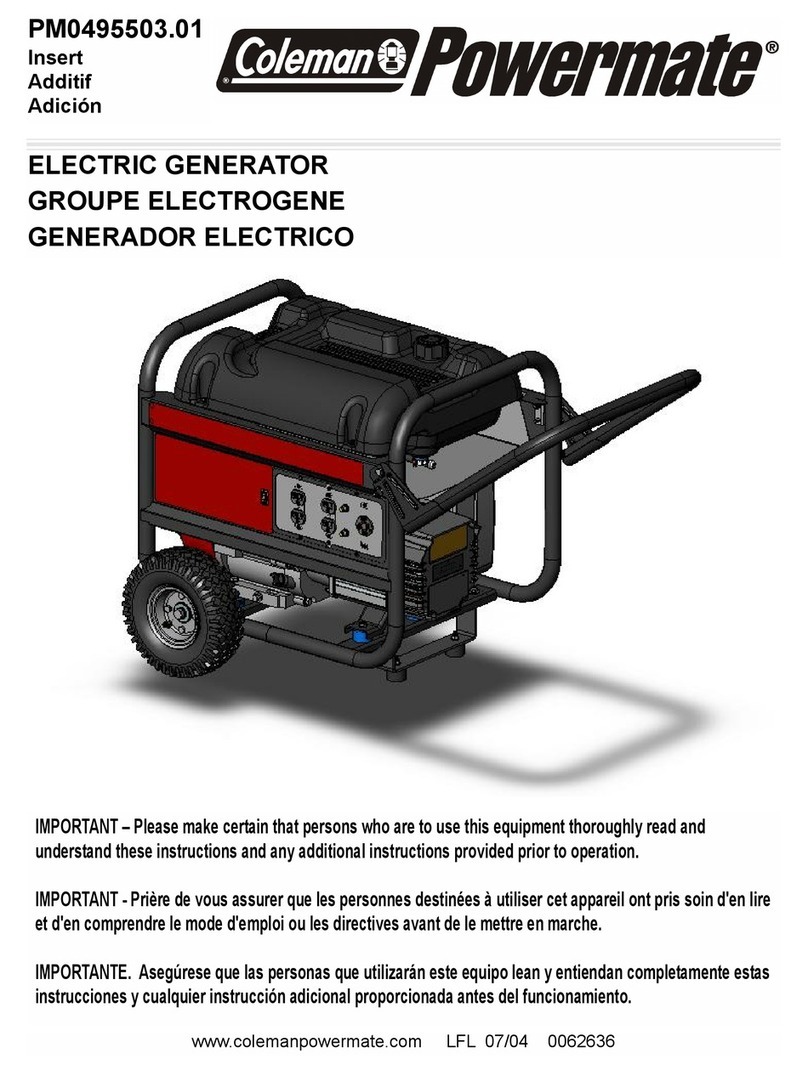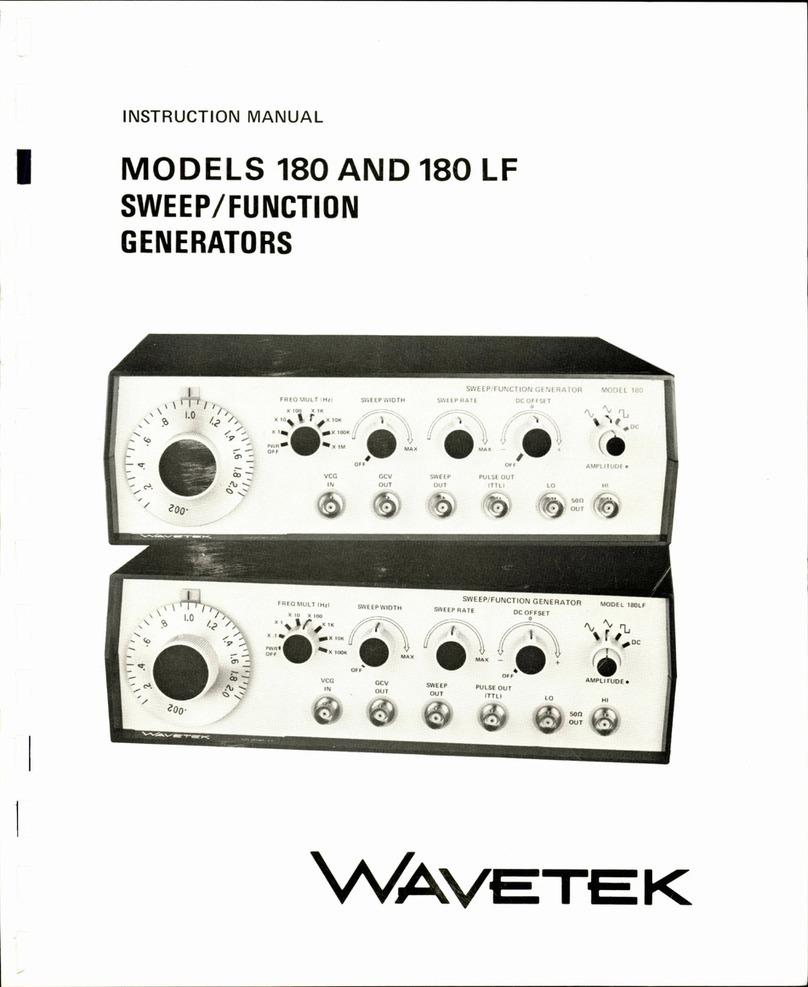Bison BS7500 User manual

BIS
`"

Thank you for purchasing a generator. We want to help you get the best results from
your new generatorand to operate
it
safely
This manual contains the information on how to
do
that; please read it carefully.
All information and specifications
in
this publication is based on the latest product
information available at the time
of
printing.
We
reserve the right
to
make changes at
any time without notice
and
without incurring any obligation. No part of this publication
may be reproduced without written permission.
This manual should be considered a permanent part ofthe generator and should
remain with it
if
it
is resold.
Safety Messages
Your safety and the safety
cl
others are very important. We have provided important
safety messages
in
this manual and
on
generator. Please read these messages
carefully.
A safety message alerts you to potential hazards that could hurt you
or
others, Each
safety message is preceded by a safety alert symbol
and one
of
three words:
DANGER, WARNING, or CAUTION.These mean:
_
_
匹还证:'
You
WILL
be KILLED
or
SERIOUSLY HURT
if
you
don't
follow
Instructions.
You
CAN be KILLED
or
SERIOUSLY HURT
ifyoudon't
follow
instructions.
You
CAN be HURT
if
you
don'tfollow
instructions.
Damage Prevention Messages
other important messages are
pre
岱
ded
by the word NOTICE.
This word means:
[
NOTlCE]
Yourgeneratororotherproperty
could
bedamaged
Ifyou
don't
follow
Instructions.
The purpose
of
these messages
is
to help prevent damage to yourgenerator, other
properly,
or
the environment.

CONTENTS
1.SAFETY ....
..
.....................
..
..........
....
.
..
.......
.... ..
...
....
.
..
.......
..
..
..
...
....
.
..
.......
..
..
..
...
..
....
..
...
..
....2
2.COMPONENT
IDENTIFICATION
........................
..
..........
..
....
.... ..
..........
..
.
..
.
.... ..
..........
..
....4
3.CONTROLS .....................................
....
....................
..
.....................
.... ..
.....
..
....................... 5
1)
Engine Switch .
..
...........
..
..........
.... ..
...........
..
..........
.... ..
....
.. ....
.
..
..........
.... ..
....
.. ....
.
.... ..
.5
2)
Recoil Starter .........
..
.
..
.
..
...
..
.
..
.
..
.
.. ..
.
..
..............
..
....
..
.
..
.
..
......
..
.
..
.
.. ..
.
..
...........
..
....
..
....
..
5
3)
Fuel
Valve
............
..
.
....
..
..
.
....
..............
..
..
.
..
....
..
.
....
................
..
.
..
....
..
.
....
.................... 5
4)
Choke .......... ...........................................
.... ..
....
..
.....
.. ....
.....................................
....
.....6
5)
Circuit
Breaker.
..
........................
..
...........
..
......
..
.....................
..
.......
..
.......................
..
6
6)
Ground Terminal ................
..
..........
..
...................
..
..........
..
...................
..
..........
..
......... 7
7)
Oil
Alert
System...
..
...
..
.......
..
..
..
.......
..
.......
.... ..
............
..
.......
..
.......
.... ....
.....
..
...
..
....
..
.... 7
4.GENERATOR
USE..
..
...........
..
................
..
...........
..
.....................
..
...
.. ..
.........
..
........
.. ..
....
..
7
1)
Connections
to
a
Building
's Electrical System
..
...
.. ....
..........
.. ....
..........
..
........
....
........7
2)
Ground System .............
..
........
..
........
..
......................
..
.
..
...........
..
......................
..
....
..
.8
3)
AC
Applications..
..
......
.... .... ...... ..
....
..
.
....
......
.... .... ....
..
..
....
..
.
....
......
.... .... .... ....
....
..
.
....
....8
4)
AC
Operation.........
..
.......
.... ..
...
....
.
..
.......
....
......
....
.....
....
.
..
.......
.... ..
...
....
.
..
...
.... ....
...
..
....9
5)
DC
Operation
..
..
..
...
..
..........
..
........
..
........
..
............
..
.................
..
.
..
...
....
.
..
.....
..
............
..
9
6)
High
Altitude
Operation
..
.
..
.
..
.
..
...............
.. ..
.
..
.
..
..................
.. ..
.
..
.
..
.......................
..
.
..
11
5.PRE-OPERATION
CHECK
.........
.......... ....
.............
.......... ............
.............
.......... ..........
....
..
12
1)
Engine
Oil
...................
..
...
..
......
..
..
.................
..
....
..
...........
..
..
..
.........
..
......
..
........
..
12
2)
Fuel Recommendation ....................................................
..
...................
..
............
13
6.
STARTING
/ STOPPING
THE
ENGINE
.....
..
........
..
..................
..
.
.. ....
....
.. ....
.........
..
..
..........
15
?.MAINTENANCE
.....................
..
.
..
.
..
.
..
.....
..
..
........
.. ..
..
..
...........
..
..
........
..
.
..
.
..
...................
16
1)
Maintenance Schedule .....
..
..................
.... ..
.....
..
.
..
...............
..
.
.... ..
.....
..
..................
..
17
2)
Tool
Kit
................
..
.............
..
........
..
......
..
..
..
..
..
..............
..
.............
..
....
..
........
..
...........
17
3)
Engine
Oil
Change .....
..
..
...................
..
....................
..
..
...
..
.........
..
..................
..
.......
18
4)
Air
Cleaner
Service..
..
............................................
.......... ..
.
.......... .............. ..........
..
...
19
5)
FueI
SedIment Cup C|eanmg
20
..
.
..
.......
..
.
....
.
..
..........
....
.
..
....
..
.
..
.
....
.
..
....
..
....
....
.
..
...
....
..
6)
Spark Plug Service
..
..
..
.......
..
.......
.. .. .. .. .. .. .. .. .. .. .. .. .. .. .. .. .. .. .. .. .. .. .. .. .. .. .. .. .. .. .. .. .. .. .. .. ..
......
20
8.TRANSPORTING /
STORAGE......
.
..........
.........
..
....
....
.......... ....
.........
.. ..
......
....
.......... ....
.....
22
9.SPECIFICATIONS ... ......................
..
.................
..
..
..
.......
..
....
..
........
..
.......................
..
......
..
24

1.
SAFETY
The generators are designed to give safe and dependable service ifoperated
according
tO
instructions. Read and understand this owner's manual before operating
your generator.
You
can help prevent accidents by being familiar with your generator's
controls, and by observing safe operating procedures.
Operator Responsibility
• Know howto stop the generatorquickly
in
case
of
emergency.
• Understand the use
of
all generatorcontrols,output receptacles.Andconnections.
• Be sure that anyone who operates the generator receives proper instruction. Do
not let children operate the generatorwithout parental supervision. Keep children
and pets away from the area
of
operation.
• Place the generatoron a firm, level surface and avoid loose sand
or
snow.
If
the
generator is tilted
or
overturned, fuel spillage may result. Also. If the generator
is
overturned
or
sinks into a soft
surface,
sand,dirt,
or
water may enterthe generator.
Carbon Monoxide Hazards
• Exhaust Contains poisonous carbon monoxide. a colorless and odorless gas
Breathing exhaustcan cause loss
of
consciousness and maylead to death.
• Ifyou run the generator
in
an area that is confined orever partially enclosed. The air
you breathe could contain a dangerous amount
of
exhaust gas.
To
keep exhaust
gas from building up , provide adequate ventilation.
Electric Shock Hazards
• The generator produces enough electric power to cause a serious shock
or
electrocution ifmisused.
• Using a generatorelectrical appliance
in
wetconditions, such as rain
or
snow, or
near a pool
or
sprinkler system,
or
when your hands are wet: could result
in
electrocution. Keep the generator dry.
• If the generator is stored outdoors, unprotected from the weather, check all
electrical components on the control panel. before each use. Moisture or ice can cause
a malfunction
or
short circuit
in
electrical components which could result
in
electrocution.
• Do not connect to a building's electrical system unless an isolation switch has been
installed by a qualified electrician.
2

Fire
and
Burn
Hazards
• The exhaust system gets hot enough to ignite some materials.
—Keep the generatorat least 1 meter (3 feet) away from buildings and other
equipment during operation
-Do not enclose the generator
in
anystructure.
—Keep flammable materials away from the generator.
• The mufflerbecomes very hot during operation and remains hotfora while after
stopping the engine.Be careful not to touch the mufflerwhile it is hot. Let the engine
cool before storing the generatorindoors-.
• Gasoline is extremely flammable and is explosive under certain conditions. Do
not Smoke or allow flames or sparks where the generator
is
refueled or where
gasoline
is
stored. Refuel
in
a well-ventilated area with the engine stopped.
• Fuel vapors extremelyflammable and may ignite afterthe engine has started. Make
sure that any spilled fuel ha& been wiped up before starting the generator.
3

2.
COMPONENT IDENTIFICATION
1
。
1.ENGINE SWITCH
2.VOLTMETER
3.CIRCUIT BREAKER
4.DF FUSE (OR
DC
CIRCIUT PROTECTOR)
5.GROUND TERMINAL
6.DC TERMINALS
7.AC220V TERMINALS
8.AC380V TERMINALS
9.0IL
FILTER CAP
10.RECOIL STARTER GRIP
11.AIR CLEANER
12.CHOKE LEVER
NOTE: Diagrams may vary according to the types.
4

3. CONTROLS
1)
Engine Switch
To start and stop the engine.
Switch
position
:
OFF:
ON:
START:
To Stop the engine. Key can be removed/inserted.
To run the engine after starting.
To start the engine
by
turning
the starter motor.
With
in
Electric Starter
\
。
With
out Electric Starter
START
Return the key
to
the
ON
position
once the engine has started. Do
not
use
the starter
for
more than 5 seconds
at
a time.
If
the engine fails
to
start,
release the
switch
and
wait
10 seconds before operating the starter again.
2) Recoil Starter
To start the engine, pull the starter grip lightly until resistance is felt, then pull briskly.
| NOTlCE | Do not a||ow the
starterto
snap back againstthe engme.
Return
it
gently to prevent damage to the starter.
3) Fuel Valve
The fuel valve
is
located between the fuel tank and carburetor. When the valve lever
is
in
the
ON
position,fuel
is
allowed
to
flow from the fuel tank to the carburetor.
Be
sure to
Return the lever to OFF after stopping the engine.
5

4)
Choke
The choke
is
used lo provide an enriched fuel mixture when starting a cold engine.
It
can be opened and closed by operating the chock leverorchoke rod manually
Movethe lever
or
the rod to the CLOSE position to enrich the mixture.
CHOKE
ROD
CL
CHOKE
比
VER
5)
Circuit
Breaker
The circuit breakerwill automatically switch OFF Ifthere is a short
ci
「
cuito
「
a
significant
overload
of
the generatoratthe receptacle. If the circuit breaker is switched OFF
automatically, check that the appliance is working properly and does notexceed the
rated load capacity
of
the circuit before switching the circuit breakerON again, The
ci
「
cuit
breaker may be used to switch the generator powerON or
OFF,
/\
。。F:
CIRCUIT
BREAKER
6

6)
Ground
Terminal
The generatorground terminal
Is.
connected to the panel
of
the generator, the metal
non-currentcarrying parts
of
the generator, and the ground terminals
of
each
receptacle. Before using the ground terminal, consult a qualified electrician, electrical
inspector
or
local agency having jurisdiction for local codes orordinances that apply to
the intended use
of
the generator.
7) Oil
Alert
System
The oil alert system is designed to prevent engine damage caused by an insufficient
amount
of
oil
in
the crankcase. Before the oil level
in
the crankcase can fall below a
safe limitthe oil alert system will automatically shut down the engine (the engine
switch will remain
in
the ON
pos
仆
ion)
.
The oil alert system shuts down the engine and
the engine will not start. Ifthis occurs,first check engine oil.
4. GENERATOR USE
1) Connections to a Building's Electrical System
Connections for standby powerto a building's electrical system must be made by a
qualified electrician.the connection must isolate the generator powerfrom utility power
and mustcom ply with all applicable laws and electrical codes.
-ImproperconnechonstoabulIdmg'
se|ectnca|system
, can a||ow
electrical current from the generator to feedback into the utility lines,
Such feedback may electrocute utility company workers
or
others who contact the lines
during a poweroutage. Consultthe utility company
or
a qualified electrician
,监$;
ope?:
$昙勹
:;n
盆°嘉需叩芯飞:心芯需:;芯言心芯
~ck
into the
generator. When utility poweris restored, the generator may explode, burn,
or
cause
fires
In
the building's electrical system.
7

2)
Ground
System
To
prevent electrical shock from foully appliances, the generatorshould be grounded.
Connecta length
of
heavywire between the ground terminal and the ground
source
The generators have a system ground that connects generatorframe components to
the ground terminals,
in
the AC output receptacles.The system ground
is
notconnected
to the AC neutral wire. Ifthe generates is tested by a receptacle tester. it will not show
the same ground circuit condition as tor a home receptacle.
GROUND
TERMINAL
Special
Requirements
there may be Federal
or
State Occupational Safetyand Health
Adm
吓
stration
(OSHA)
regu|ahons, Iocal codes,
orordinancesthatapp|yto
the mtended use
of
the generator
Please consult a qualified electrician, electrical inspector, orthe local agency having
jurisdiction.
•
In
some areas,generators are required to be registered with local utility
companies
• Ifthe generator is used ata construction site,there maybe additional regulations
which must be observed
1)
AC
Applications
Before connecting an appliance
or
powerto the generator:
• Make sure that it
is
in
good working order. Faulty appliances
or
powercords can
create a potential for electrical shock.
• Ifan appliance begins to operate abnormally, becomes sluggish or stops suddenly.
turn it offimmediately. Disconnect the appliance, and determine whetherthe problem
is
the appliance,
or
ifthe rated load capacity
of
the generator has been exceeded.
• Make sure thatthe electrical, rating
of
the tool
or
appliance does not exceed that
of
the generator. Neverexceed the maximum power rating
of
the generator. Power
levels between rated and maximum may be used for no more than 30 minutes.
8

| NOTlCE |
Substantial
overloading
will
switch
offthe
circuit
breaker.
Exceeding
the
time
limit
for
maximum
power
operation
or
slightly
overloading
the
generator
may
not
switch
the-
circuit
breaker
OFF.
but
will
shorten
the
service
life
of
the
generator.
Limit operation requiring maximum power to
30
minutes.
For continuous- operation, do not exceed the rated power
In
either case. the total power requirements (VA) of all appliances connected must
be
considered. Appliance and power tool manufacturers usually list rating information near
the model number or serial number.
4) AC Operation (
CD
. Start the engine
`\
@.
Switch the AC circuit breaker
ON
@.
Plug
in
the appliance
Most motori?sd appliances require more than their rated wattage for startup.
Do
not exceed the current limit specified for any one receptacle. if
an
overloaded
circuit causes the AC circuit breaker to switch OFF, reduce the electrical load on the
circuit, wait a few minutes and then reset the circuit breaker.
5)
DC
OPERATION
DC
Terminals
The
DC
terminals may ONLY
be
used for charging
12
volt automotive type batteries.
The terminals are colored
red
to identify the
pos
仆
ive
(+) terminal
and
black to identify
the negative (-)terminal. the battery must
be
connected to -he-generator
DC
terminals
with the proper polarity (battery positive
to
generator
red
terminal
and
battery negative
id
the generatorblack terminal) .
9

With
DC
Circuit Protector With
DC
Fuse
DC
FU
SE
P
OS
ITI
VE TERM
IN
AL(
RED
)
DC
circuit
protector(or
DC
Fuse)
The
DC
circuit protector(or
DC
Fuse) automatically shuts off the
DC
battery.
charging
ci
「
cuit
when the
DC
circuit
is
overloaded, when there
is
a problem with the
battery, or the connections between the battery and the generator are improper.
the indicator inside the
DC
circuit protector button will pop out to show that the
DC
circuit: protector has switched off. Wait a few minutes and push the button
in
lo reset
the
DC
circuit protector.
Connecting
the batter/ cables:
心
.
Before
connecting charging cables to a battery that
is
installed
in
a vehicle
Disconnect the vehicle's grounded battery cable.
,
:n
勹
C:a;
::盓
e2IVae
;芯尸$$
~~~e
agd~:
$」
atkeee$n
哥
iaat}
心:
:\$
nes
charging causing batteries.
®· Connect the positive(+) battery cable to the battery positive(+) terminal.
®· Connect the other end
of
the positive(+) battery cable to the generator
@. Connect the negative(-) battery cable to the battery negative(-) terminal.
@. Connect the other end of the negative(-) battery cable to the generator
®· Start the generator.
10

| NOTlCE | Do notstartthevehICIewhiIe the batterycharging cabIesare
connected and the generator is running.The vehicle
or
the
generatormay be damaged.
An overloaded DC circuit will fuse the DC fuse, ifthis happens, replace
fuse
An overloaded DC, excessive current drawby the battery,
or
a wiring problem
will trip the DC circuit protector(PUSH button extends out). If this happens, wait a few
minutes before pushing
in
the circuit protectorto resume operation. Ifthe circuit
protector continues to go
OFF.
discontinue changing and see your authorized generator
dealer.
Disconnecting
the
battery
cables:
也.
Stop
the engine,
®· Disconnect the negative(-) battery cable from the generator negative
(-)
terminal.
@. Disconnect the otherend
of
the negative(-) battery cable from the battery negative
(-)terminal.
@. Disconnect the positive(+) battery cable from the generatorpositive (+)terminal.
@. Disconnect the other end
of
the positive(+)battery cable to the battery positive(+)
terminal.
®· Connect the vehicle ground cable lo battery negative(-)terminal.
(J). Reconnectthe vehicle grounded battery
cable
6)
High
Altitude
Operation
At high altitude,the standard carburetor air-fuel mixture will be excessively rich.
Performance will decrease, and fuel -consumption will increase.
High altitude performance can be improved by installing a smaller diameter main fuel
jet
in
the carburetor and readjusting the pilot screw, Ifyou always operate the engine
atattitudes higherthan 5000 feel (1500 meters) above sea level, have an authorized
generatordealer perform this carburetor modification.
Even with suitable
carburetor
」
etting,
engine horsepower will decrease approximately
3.5% for each 1000foot (300 meter) increase
in
altitude.The effect
of
altitude on
horsepowerwill be greaterthan this ifno carburetor modification
is
made.
11

| NOTlCE |
lf
a
enginejetted
for
high
altitude
is
used
at
a
lower
altitude,
the lean
air
fuel
mixture
will
reduce
performance
and
may
over-heat and
seriously
damage the engine,
5.
PRE-OPERATION CHECK
1) Engine oil
| NOTlCE | Engine oil
is
a
majorfactoraffecting
engine
performance'and
service
life
non
detergent
and
2-stroke
engine
oils
will
damage The engine and are
not
recommended.
Check the oil level BEFORE EACH USE
with the generator
on
a level surface with
the engine stopped.
Use 4-stroke oil, or equivalent high
detergent, premium quality motor oil
certified to meet or exceed U.S. .automobile
0
20
40 60 80 100° F
-30 -20 -10 0
10
20 30 40° C
AMBIENT TEMPERATURE
Manufacturer's requirements Cot Service Classification
SG
. SF/CC. CD. Motor oils
classified
SG
SF/CC,
CD
will show this designation
on
the container.
SAE 1
OW
3D
is
recommended for general temperature use. Other viscosities shown
in
the chart may
be
used when the average temperature
in
your area
is.
Within the
indicated range.
1.Remove the oil filler cap and wipe the dipstick clean.
2. Check the oil level by inserting the dipstick into tine filler neck without
screwing it
in
3.
If the level
is
low, add the recommended oil to the upper mark
on
the dipstick.
12

OIL
FILLER
HOLE
2) Fuel Recommendation
1. Check
the
fuel level gauge.
2.
Refill
the tank if
the
fuel
level
is
low.
Do
not
Fill
above the shoulder of
the
fuel
strainer.
_
• Gasoline is extremelyflammable and is explosive under certain conditions.
• Refuel in a well-ventilated area with the engine stopped. Do
not
smoke
or
allowflames
or
sparks in the area where the engine is refueled
or
where
gasoline
is
stored.
• Do
not
overfill the fuel tank (there should be
no
fuel in thefiller neck). After
refueling make sure the tank cap is closed properlyand securely. Be careful
not
to
spill fuel when refueling. Spilled fuel
or
fuel
vapor
may Ignite.
]f
anyfuel
is
spilled, make sure the area
is
dry
before starting the engine.
• Avoid repeated
or
prolonged contactwith skin
or
breathing
of
vapor.
e KEEP OUT
OF
REACH
OF
CHILDREN.
UPPER
FUEL
LEVER
NKCAP
13

Use gasoline with a pump octane rating
of
86
or
higher.
We recommend unleaded gasoline because it produces fewer engine and spark plug
deposits and extends exhaust system life.
Never use stale
or
contaminated gasoline
or
oil/gasoline mixture.Avoid getting dirt
or
water
in
the fuel tank.
Occasionally you may hear light'spark knock"
or
"pinging" (metallic rapping noise)
while operating underheavy loads. This is no cause for concern
ifspark knock or pinging occurs at a steady engine speed. under normal load, change
brands
of
gasoline. Ifspark knock
or
pinging persists, see an authorized generator
dealer.
| NOTlCE |
Runningtheenginewith
persistentsparkknockorpinging
car
cause
engine
damage.
Running the engine with persistent spark knock?
or
pinging
is
misuse, and the
Distributor's Limited Warranty does notcover parts damaged by misuse
Oxygenated
Fuels
Some gasoline are blended with alcohol
or
an ethercompound to increase the octane
These gasoline are collectively referred to as oxygenated fuels. some areas
of
the
United States use oxygenated fuels to help meet clean air standards.
If you use an oxygenated fuel, be sure its pump octane rating is 86 or higher.
Ethanol
(ethyl
or
grain
alcohol)
Gasoline containing more than 10% ethanol by volume maycause starting
or
performance problems. Gasoline containing ethanol may be marketed under: the name
"Gasohol".
Methanol
(methyl
or
wood
alcohol)
Gasoline containing methanol must contain cosolvents and corrosion inhibitors to
protect the fuel system. Gasoline containing more than
5¾
methanol by volume may
cause starting and/or performance problems and maydamage metal. rubber and
plastic parts
of
yourfuel system.
14

MTBE (methyl
tertiary
butyl
ether)
You
MAY use gasoline containing up to 15% MTBE by Volume.
Before using
an
oxygenated fuel,try to
confi
「
mthe fuel's contents. Some states
(provinces
in
Canada) require this information lo he posted
on
the pump. Ifyou notice
any undesirable operating symptoms, switch to a conventional unleaded gasoline. Fuel
system damage or performance problems resulting from the USE Of
an
oxygenated fuel
are not ours responsibility and are not covered underwarranty.
| NOTlCE |
°xygenatedfuelscandamage
paintand
plastic.
Becareful
notTo
spill
fuel
when
filling
your
fuel tank. Damage caused
by
spilled
fuel
is
not
covered
under
warranty.
6.
STARTING/STOPPING THE ENGINE
Starting
the
engine
句
.
Make
sure thatAC circuit breaker
IS
IN
THE OFF position.
The generator may
be
hard to start ifa load is connected.
®·
Turn the fuel valve to the- ON position
®· Turn the choke lever orto the CLOSE position, orpull the choke roc out to the
CLOSE position.
@. startthe engine
With
recoil starter:
Turn the engine switch to the ON position.
Pull the starter grip until compression is felt,then pull bri3kly.
| NOTlCE | l
notallowthestartergriptosnap
backagainsttheengine.
Return,
fit
gently
to
prevent
damage
to
the
or
housing.
With
electric
starter
(Optional kit)
Turn the engine switch to the START position and hold
it
there for 5 seconds or
until the engine starts.
15

| NOTlCE |
Operating
startermotorformore
than
5seconds,
can
damage
the
motor.
If
the
engine
fails
to
start, release
the
switch
and
wait
10
seconds
before
operating
the
starter
again.
If
the
speed
of
the
starter
motor
drops
after
a
period
of
time,
it
indicates
that
the
battery
should
be recharged.
When the engine starts, allow the engine switch to return to the
ON
position
@. Turn the choke Fever or push 6he choke
rod
to the OPEN position as the engine
warms up.
Stopping
the
engine
In an
emergency:
To stop the engine
in
an
emergency, move the engine switch to the OFF position.
In
normal
use:
CD
. Turn the AC circuit breaker to the OFF position.
Disconnect the
DC
battery charging cables.
®· Turn the engine switch to the OFF position.
®· Turn the fuel valve to the OFF position.
7.
MAINTENANCE
Good maintenance
is
essential for safe, economical, and trouble-free operation. It will
also help reduce air pollution.
匹
Exhaustgas
containspoisonous
carbonmonoxide,
Shutoff
the
engine
before
performing
any
maintenance
,
If
the
engine
Must
be run, make
sure
the
area
is
well ventilated.
Periodic maintenance and adjustment is necessary to keep the generator
in
good
operating condition. Perform the service and inspection at the intervals shown
in
the
Maintenance schedule below.
16

1) MAINTENANCE SCHEDULE
REGULAR
SERVICE
PERIOD
Performed
at
every
indicated
month
or
First
Every
3
Every
6
operating
hour
interval
whichever
comes
Each
Every
month
or
months
or
months
or
first
use
year
or
20
Hrs
50
Hrs
100
Hrs
300
Hrs
ITEM
~heck
level
。
Engine
Oil
~hange
。
0
Air
cleaner
Check
。
~lean
0(1)
Sediment
Cup
~lean
。
Spark
plug
Check
-Clean
。
Spark
arrester
~lean
。
(optional
parts)
Valve
Cleaner
Check-Adjust
0(2)
Fuel
tank
and
strainer
Clean
0(2)
Fuel
line
~heck
Every
2
years
(replace
if
necessary
(2)
rn.
Service- more frequently when used
in
dusty areas.
(2). These items should
be
serviced
by
an
authorized generator dealer, unless the
owner has the proper tools and
is
mechanically proficient.
(3). For professional commercial use, long hours of operation to determine proper
maintenance intervals
匹
lmproper
maintenance,orfailure
tocorrect
a
problem
before
operation, can cause a
malfunction
in
which
you
can be
Seriously
hurt
or
killed.
Always
follow
the-
inspection
and maintenance
recommendations
and
schedules
in
this
owner's
manual.
The maintenance schedule applies to normal operating conditions. If you operate your
generator under severe conditions, Such as sustained high-load or hig1i-lerinpOrature
operation, or use it
in
unusually wet or dusty conditions, consult your servicing dealer
for recommendsticin3applicable to your individual need3 and use.
2) Tool kit
The tools supplied with the generator will help you to perform the owner maintenance
procedures listed
on
the following page. Always keep (his tool kit with the generator.
17

勹
PLUG
WRENCH
HANDLE
BAR
TOOL
BAG
NOTE:Diagrams may vary according to the types.
3) Engine
oil
change
Drain the oil while the engine
is
warm to assure complete and rapid draining.
1.
Remove the drain plug and sealing washer4, oil filler cap, and drain the cit.
2.
Reinstall the drain plug and sealing washer. Tighten the plug securely.
3.
Refill with the recommended oil and check the oil level.
\
_...y--
0|LDRAINPLUG `
-Used
motor
oil
may
cause
skincancerifrepeatedlyleft
in
contact
with
the
skin
for
prolonged
periods
Although
this
is
unlikely
unless
you
handle used oil
on
a
daily
basis,
it
is
still
advisable
to
thoroughly
wash
your
hands
with
soap
and
water
as
soon
as
possible
after
handling
used oil.
Please dispose ofused motor
oil
in
a manner that
is
compatible with the environment.
We suggest you take
it
in
a sealed container
to
your local service station or recycling
centerfor reclamation
..
Do
not throw it
in
the trash orpour
it
on
the ground.
18
Table of contents
Other Bison Portable Generator manuals
Popular Portable Generator manuals by other brands

MULTIQUIP
MULTIQUIP Power WHISPERWATT DCA-20SPX Operation and parts manual
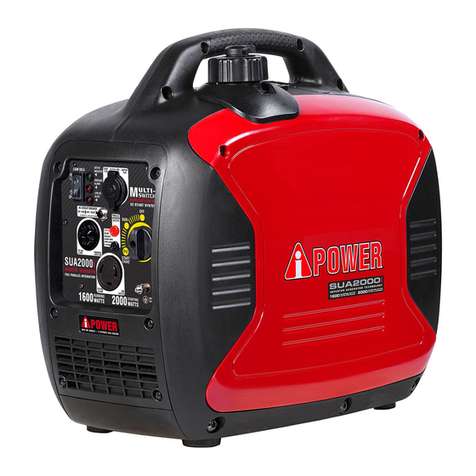
Power
Power SUA2000i owner's manual
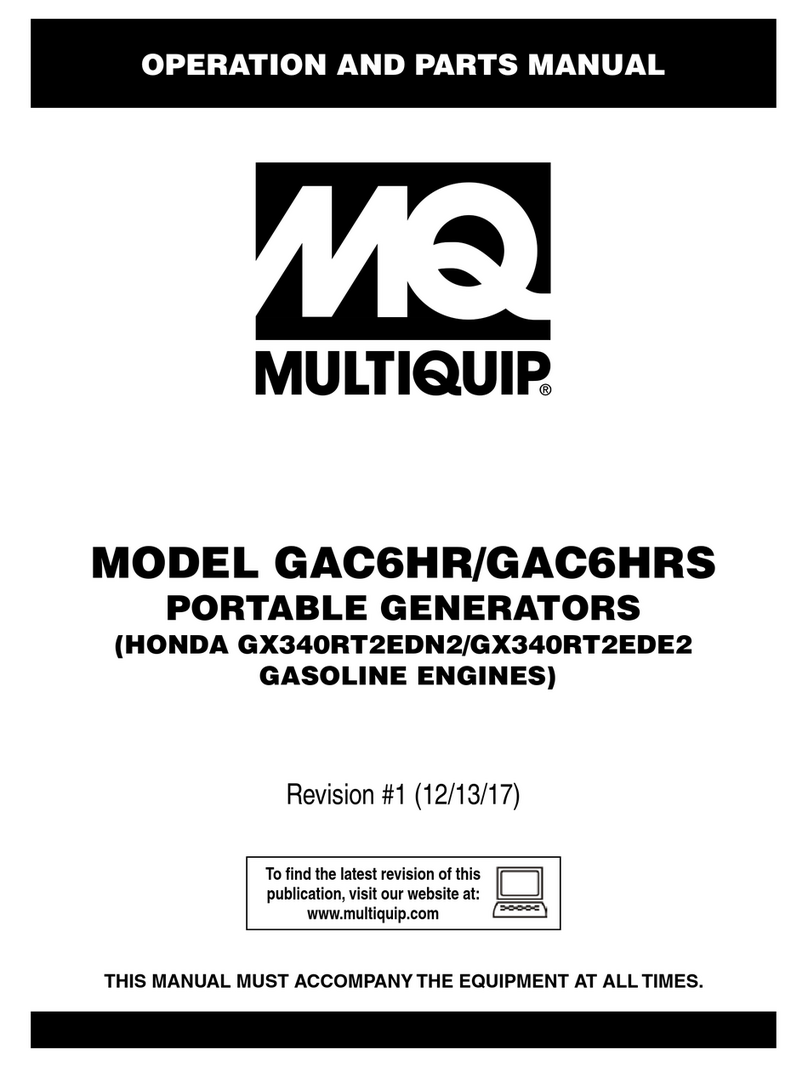
MULTIQUIP
MULTIQUIP GAC6HRS Operation and parts manual

Homelite
Homelite HG6000 Operator's manual
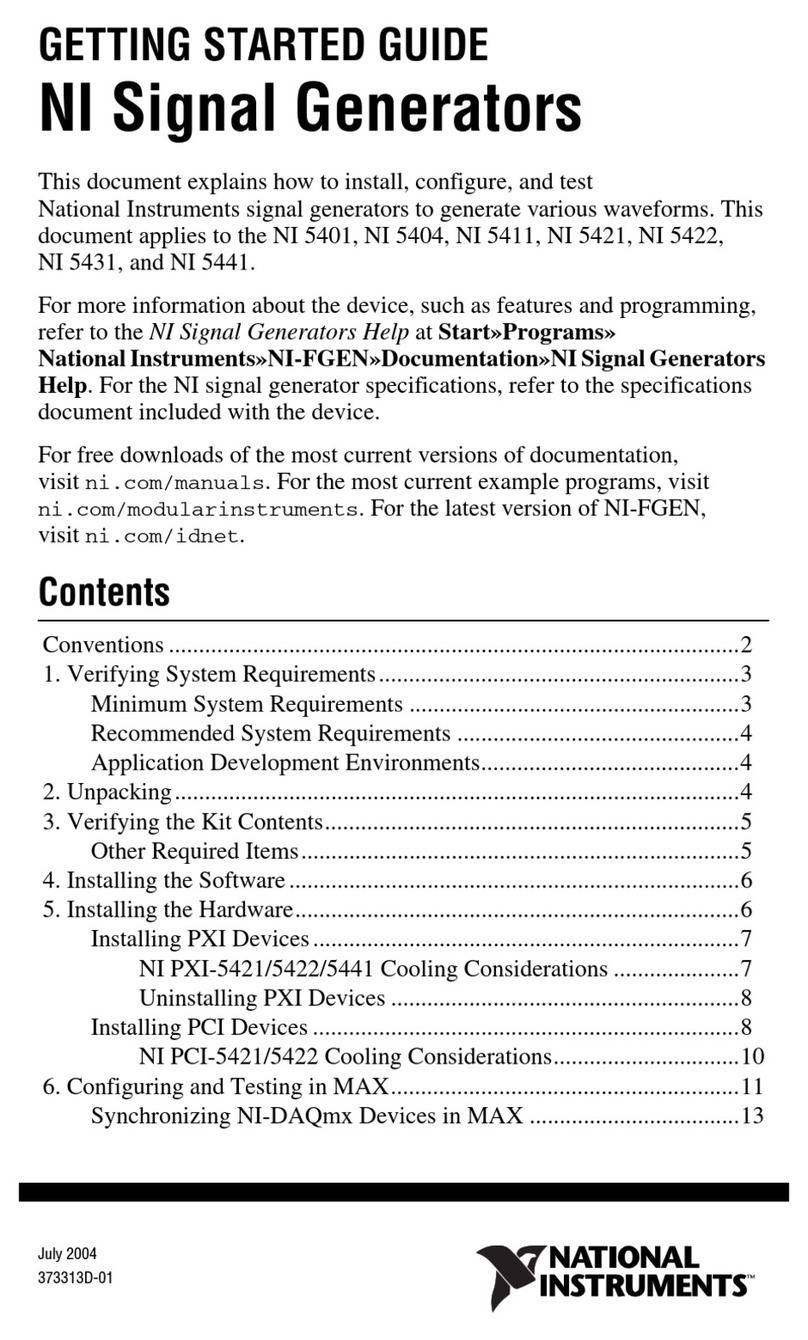
National Instruments
National Instruments NI 5401 Getting started guide
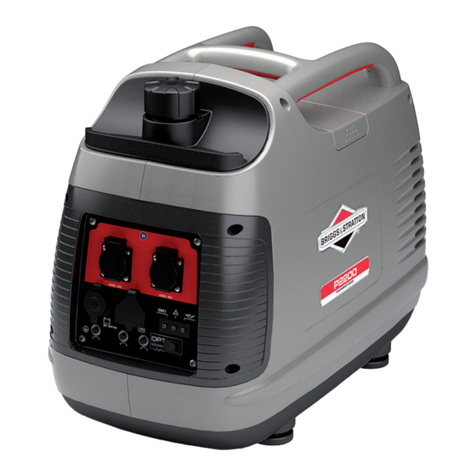
Briggs & Stratton
Briggs & Stratton P2200 manual
